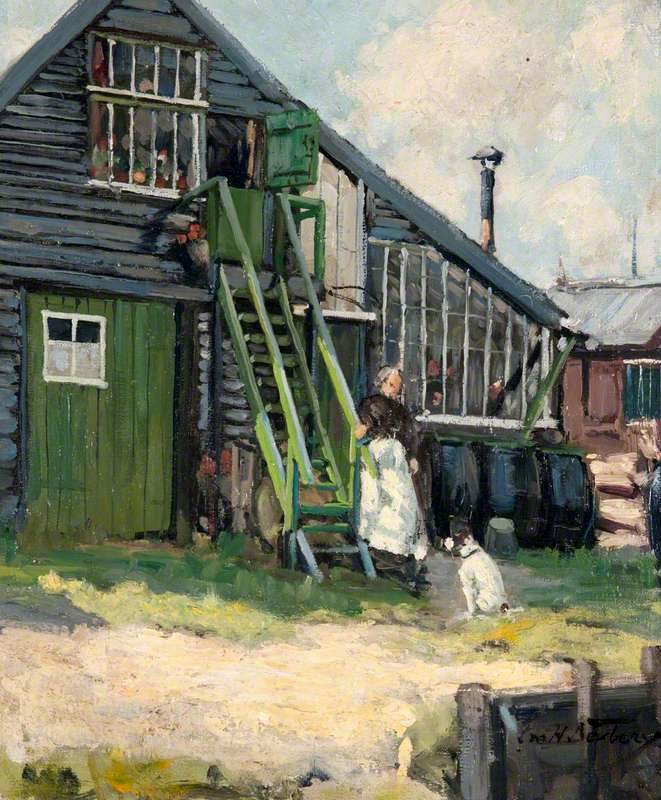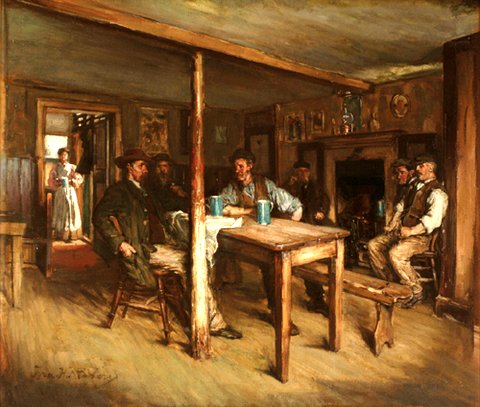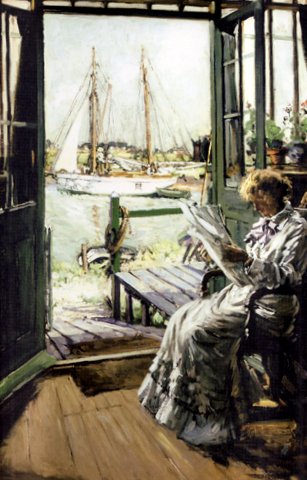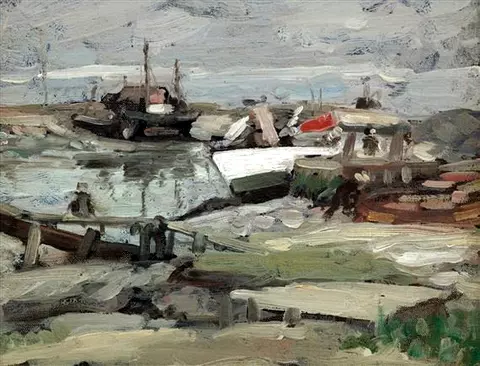NEWBERY, Francis Henry
Francis Henry Newbery, known as Fra Newbery, was born at Membury, Devon on 15 May 1855, son of William Newbery, a shoemaker, and his wife Mary. In 1861, 6-year-old Francis was living at Folly Mill Lane, Bridport, Dorset with his parents, 37-year-old William and 37-year-old Mary, with five siblings, Tom George 11, Sophie Ellen 5, William Alexander 4, Sidney Elliott 1 and newly born Eda Ann. Newbery trained to be a teacher at Bridport Boys’ General School and from about 1871 attended the Bridport School of Art, on the first floor of the Literary and Scientific Institute, qualifying as an art master, and acting as assistant to its headmaster. In 1875 he obtained an appointment as art master at a London secondary school and worked in London schools until 1882 when he obtained a scholarship to become an Art Master in Training at the National Art Training School (now the Royal College of Art) when he was boarding at 89 Greenwood Road, Hackney. By the time he left the School he was acting as a member of staff, teaching painting, the figure, and architecture. In 1885 appointed director of the Glasgow School of Art and, under his leadership, the school developed an international reputation and was associated with the flourishing of Glasgow 'Style' and the work of Charles Rennie Mackintosh and his circle and Newbery was a member of the Glasgow Art Club. Fra married on 28 September 1889, Jessie Wylie Newbery née Rowatt, and in 1901 a 45-year-old art master at the Glasgow School of Art, living at 6 Buckingham Street, Govan, Partick, Lanarkshire with his 34-year-old wife Jessie and two daughters, 15-year-old Margaret E. and 8-year-old Mary A. another daughter Eucot must have died. A painter and art educationist, about 1900 he took a long-term tenancy of a summer residence 'Rooftrees' a semi-detached villa in the main street in the seaside village of Walberswick in Suffolk, which was already a popular artists' colony, renting a converted riverside net shed for use as a studio. The adjoining half of the villa, Millside, was a lodging house at which Newbery was able to arrange accommodation for his friends, including Charles Rennie Mackintosh, as well a studio space for them, near his own beside the river and which became a magnet in bringing other Scottish based artists to the area including Maurice Greiffenhagen (1862-1931) and many others. Under Francis Newbery's direction the Glasgow School's prestige grew, both internationally and at home. His reputation as a successful director was enhanced by the high profile of various Glasgow artists from the 1890s until the early years of the 20th century. He retired in 1917 when he returned to Dorset and after staying at the Greyhound Inn from 1919, in 1921 they purchased Eastgate House, on East Street, Corfe Castle together with a former chapel and cottages grouped around a courtyard, known as Well Court, on West Street. The chapel became Newbery’s studio, and he continued painting until 1932. Francis Henry Newbery died at Corfe Castle on 18 December 1946.
Works by This Artist

|
Waterfront Building, WalberswickOil on canvas
|

|
In the TavernOil on canvas
|

|
Summer's Day - View towards Southwold from the artist's studio with his wife Jessie in the foregroundOil on canvas
|

|
WalberswickOil on canvas
|